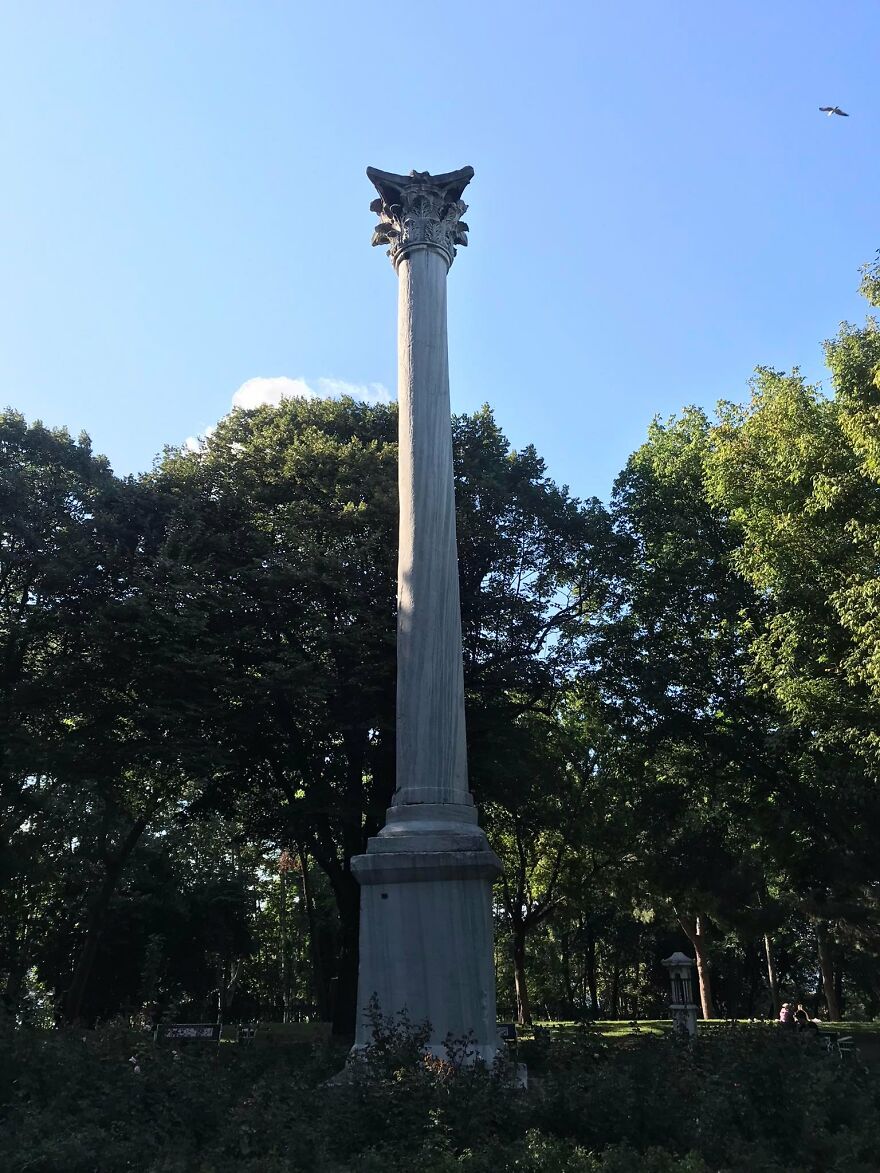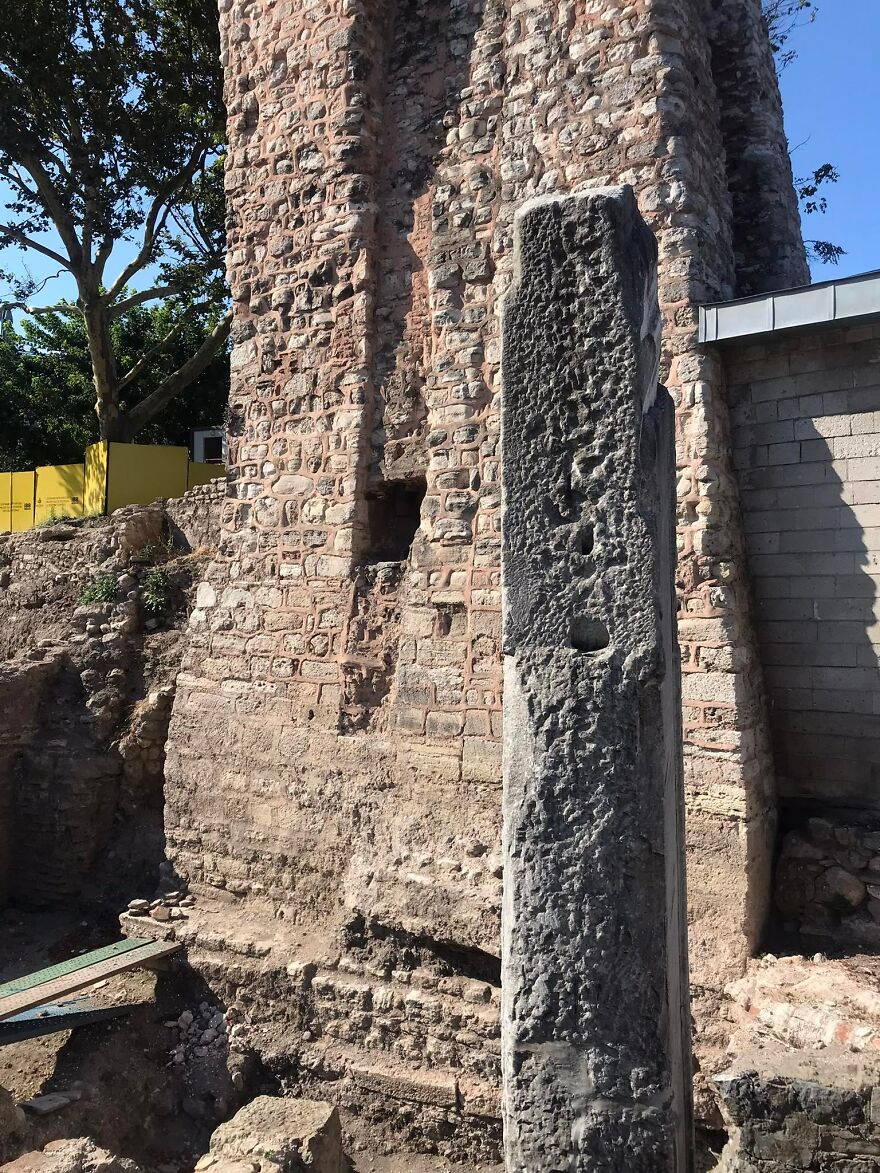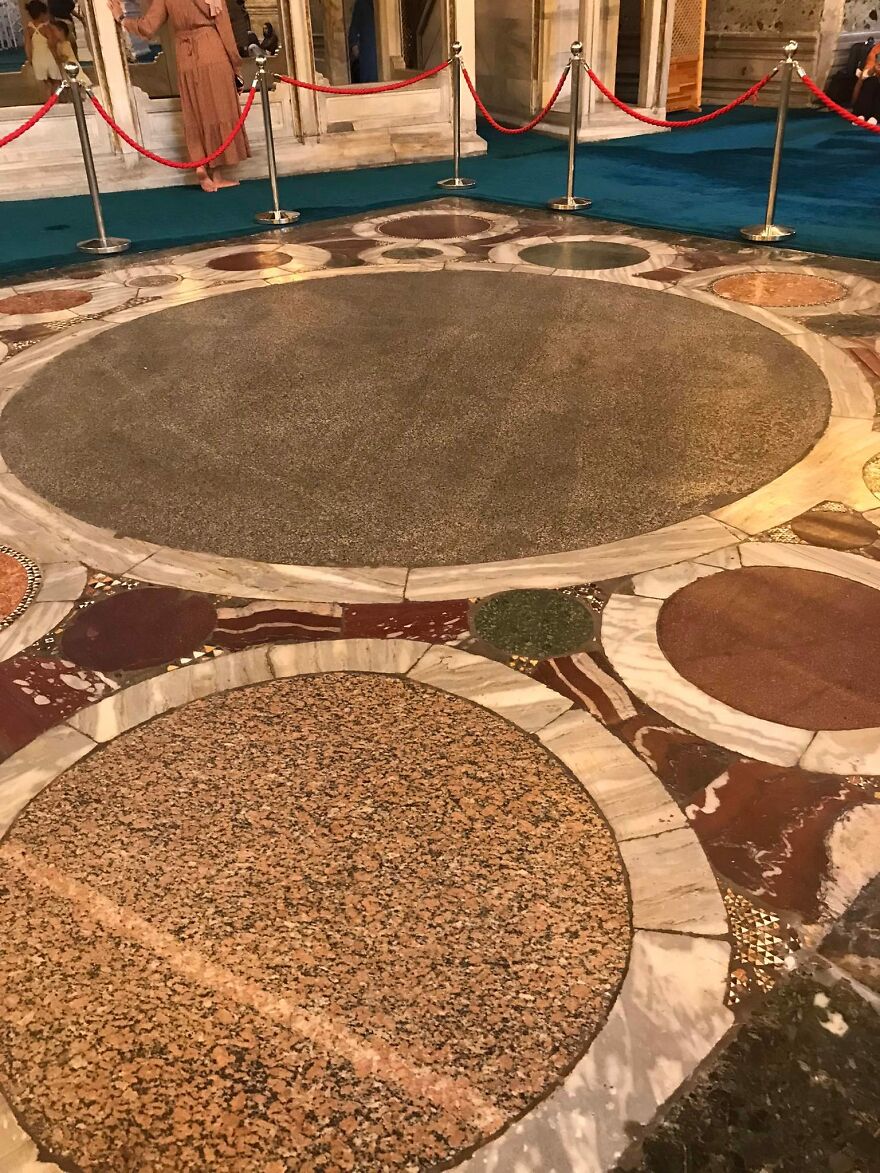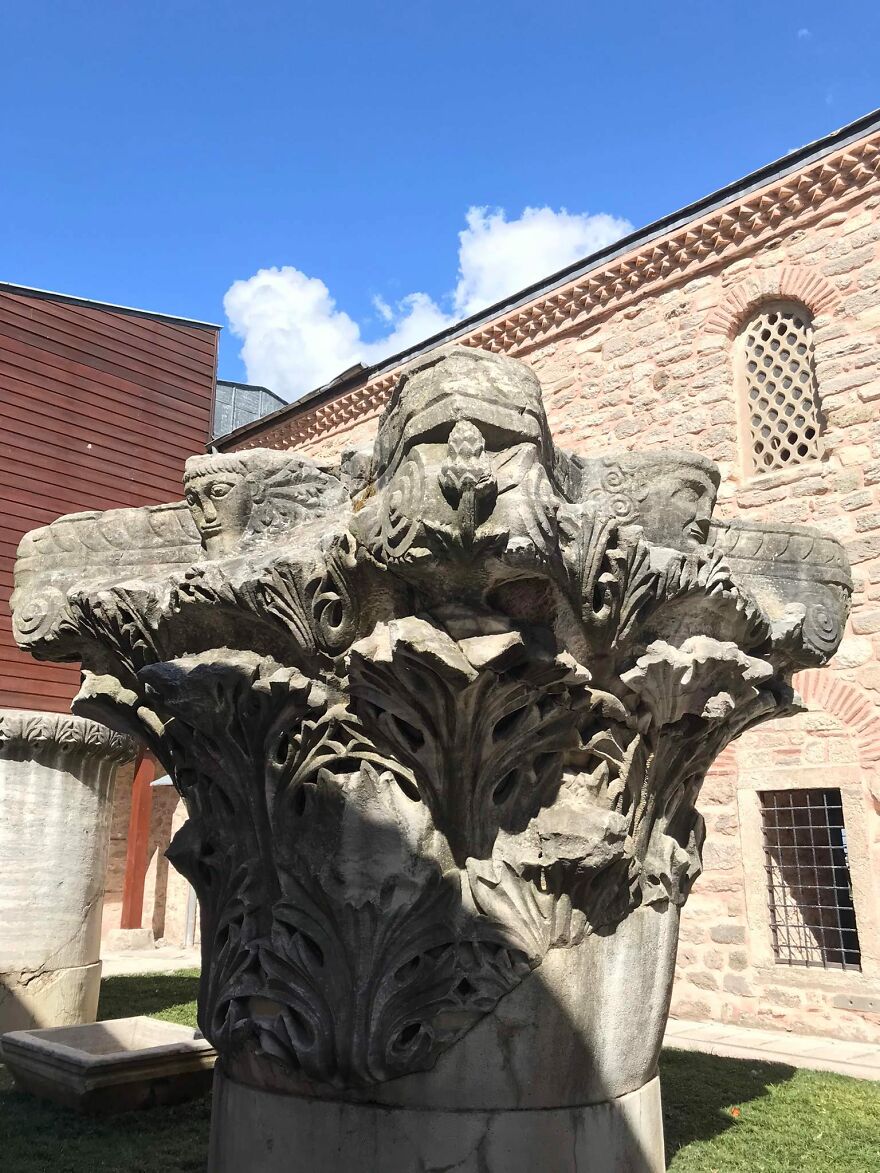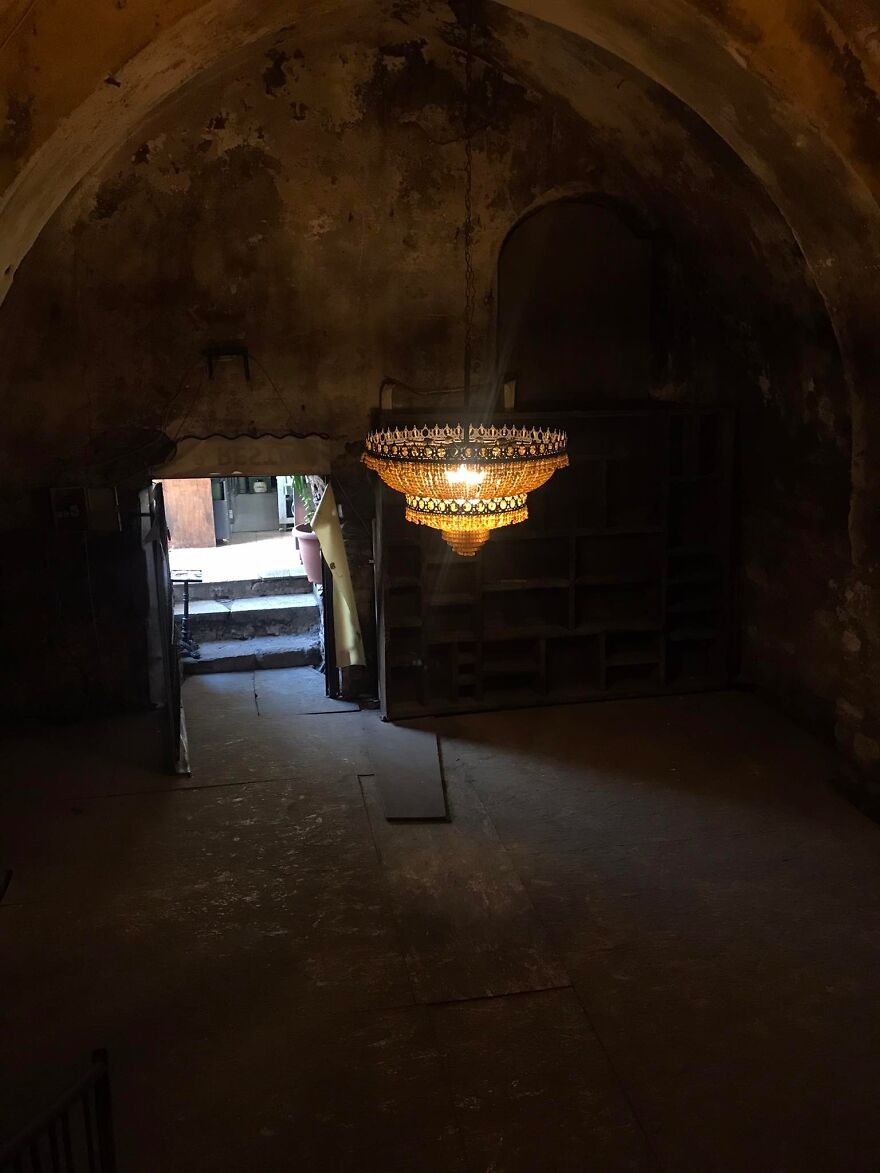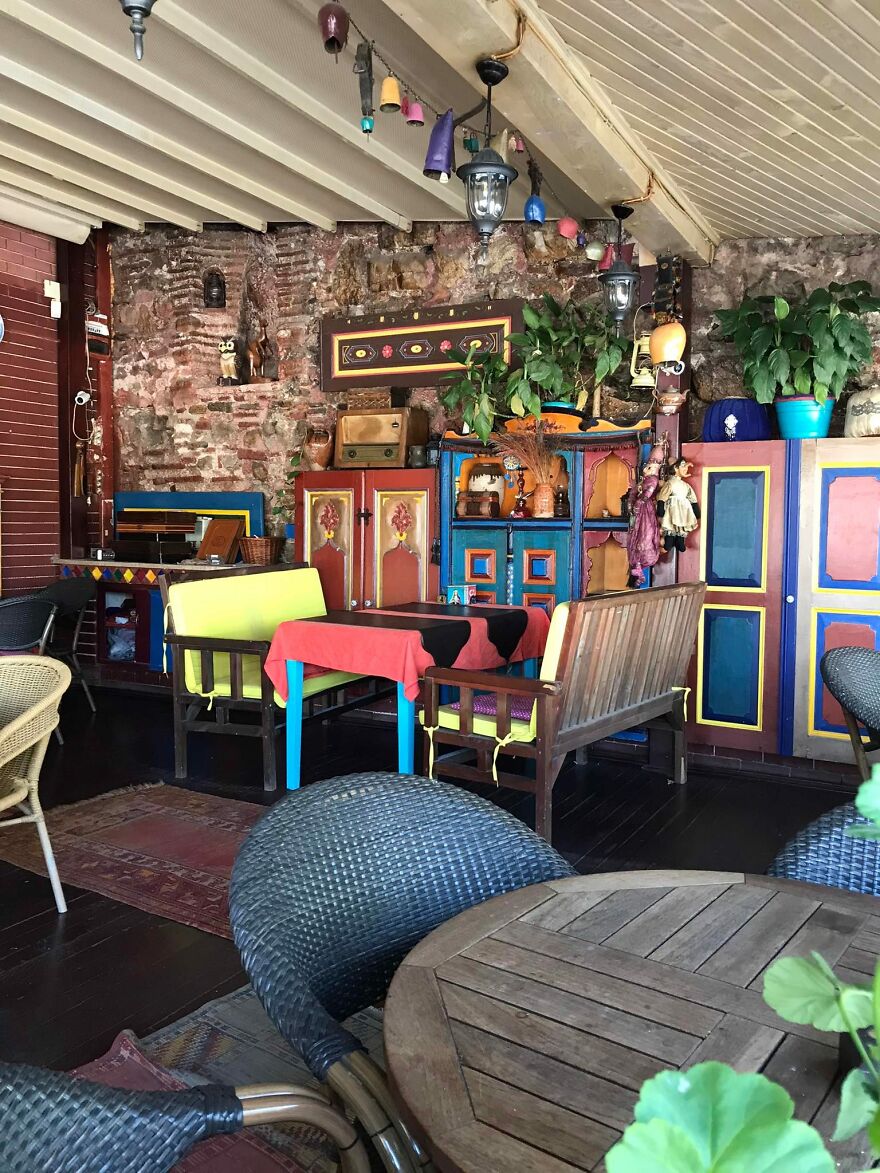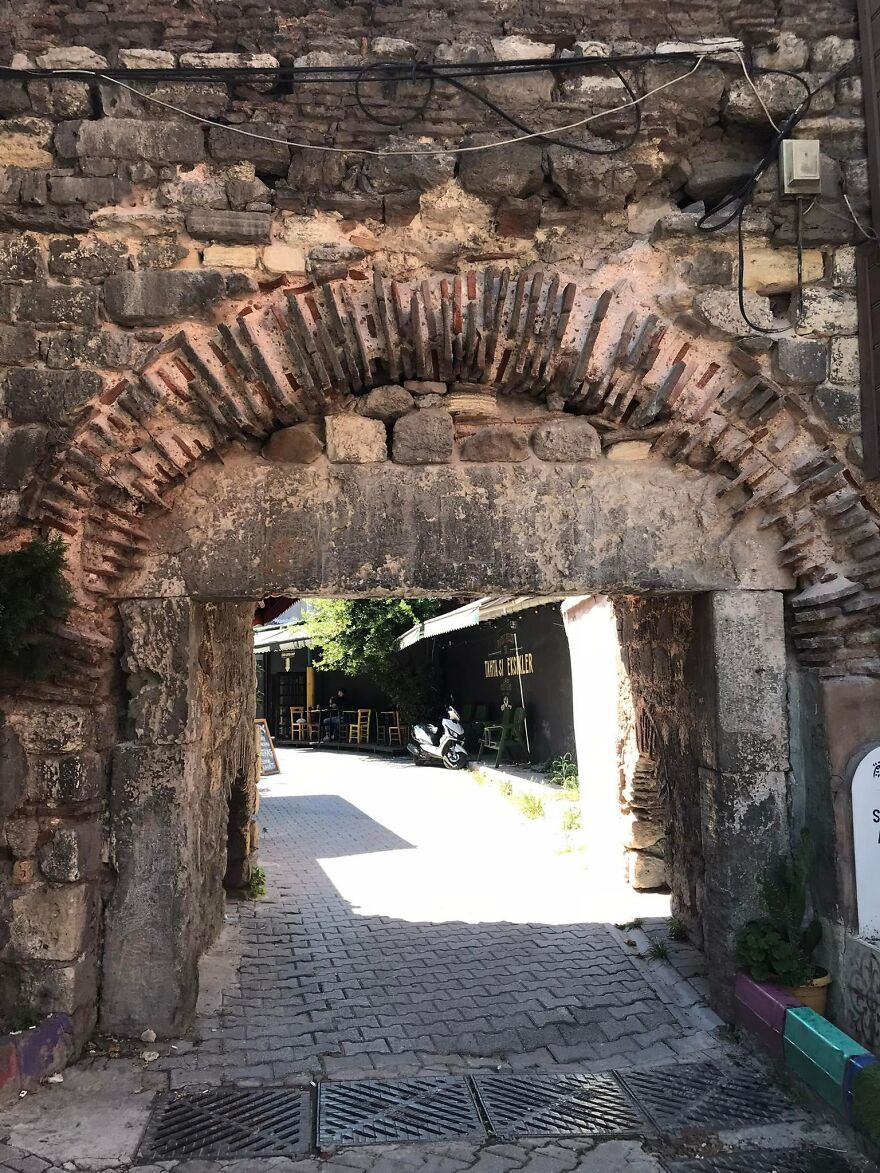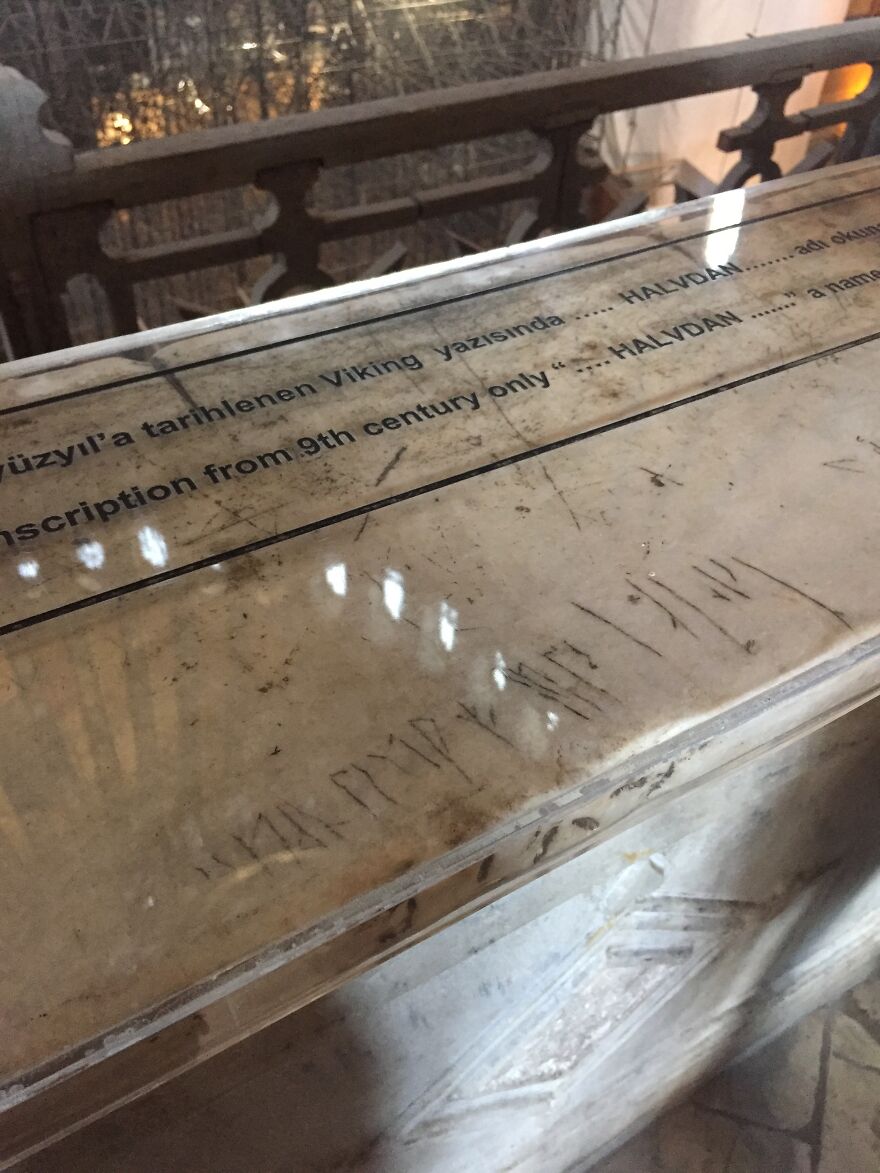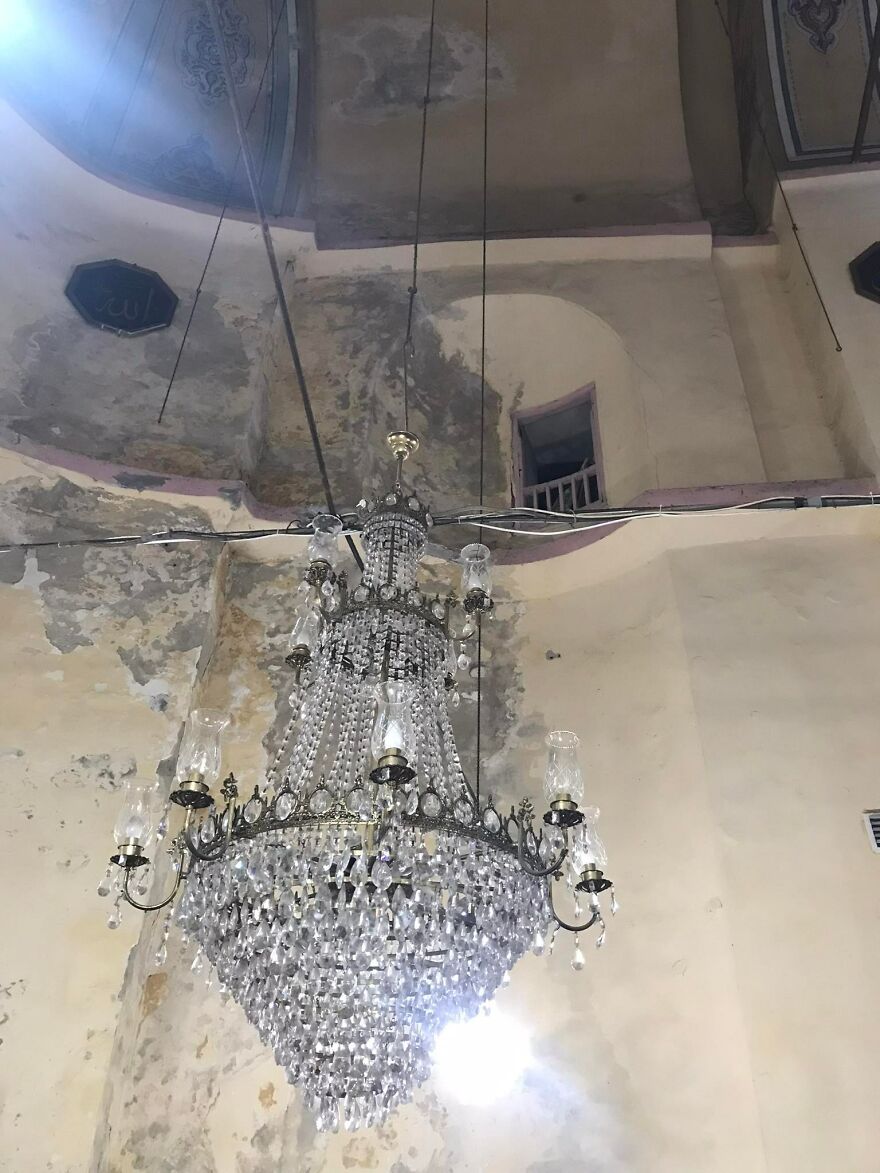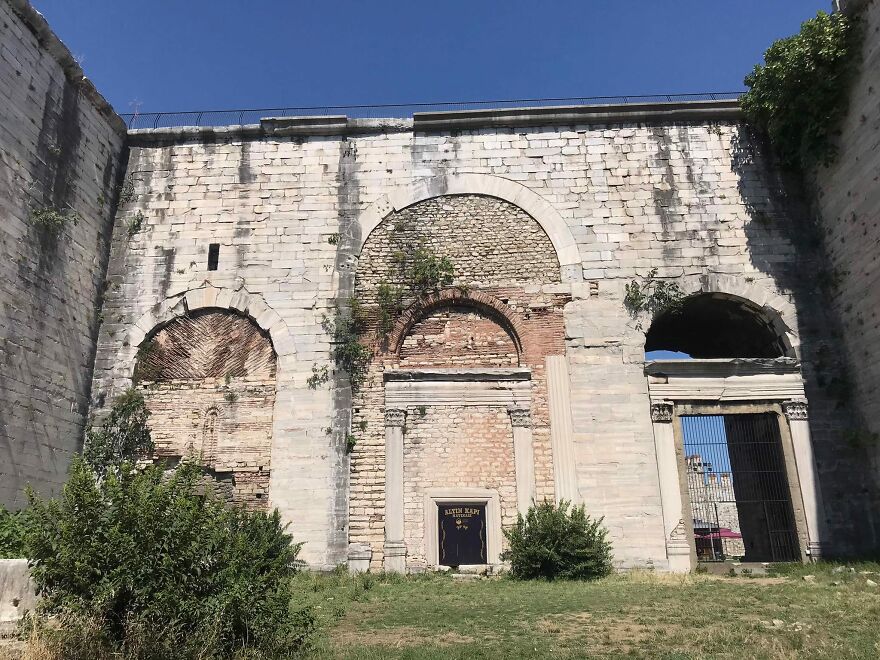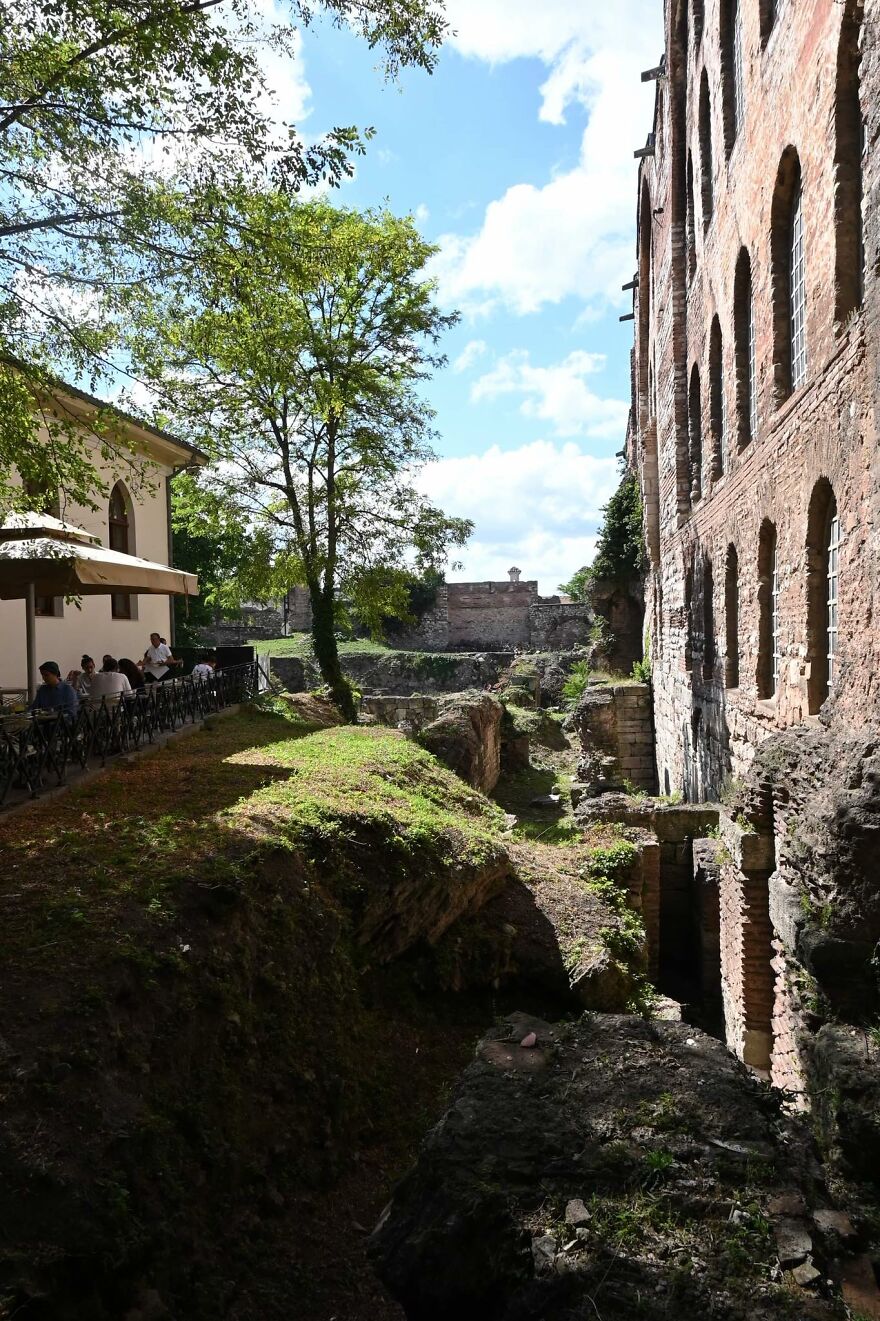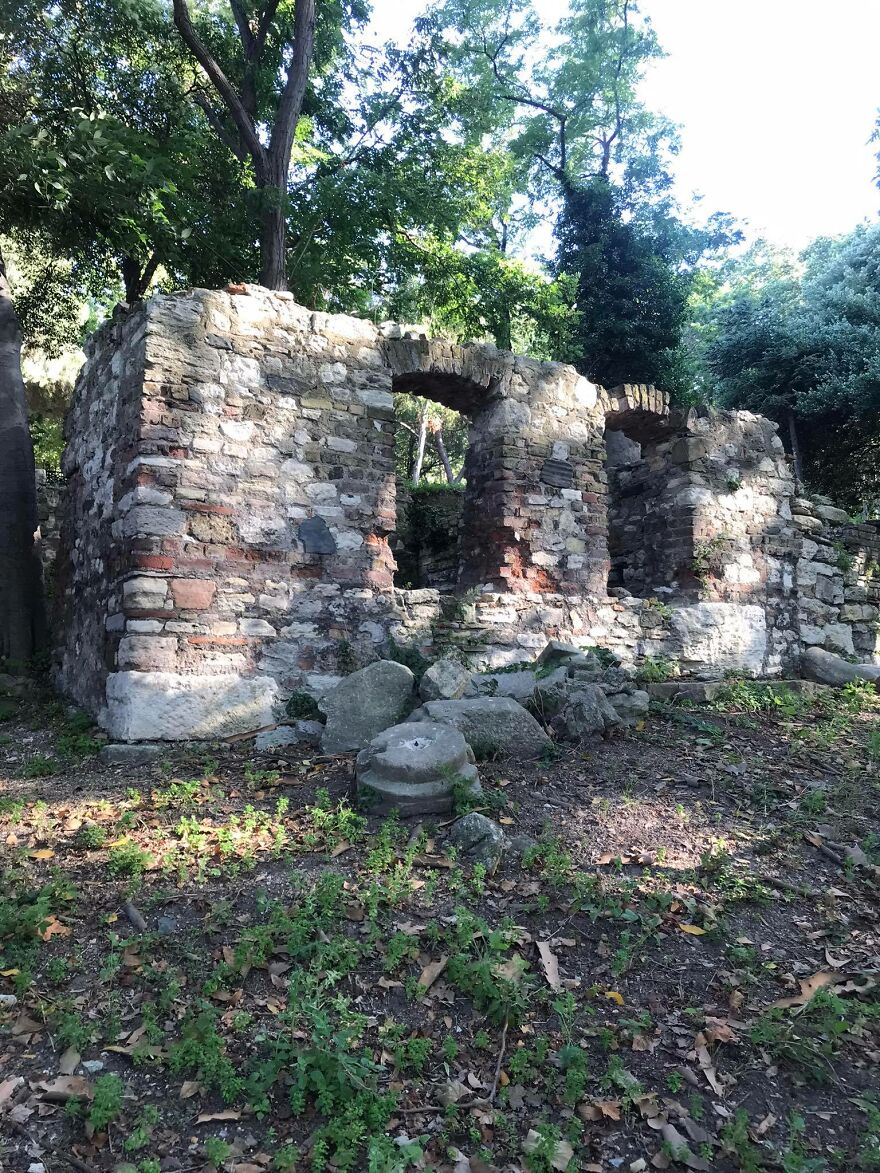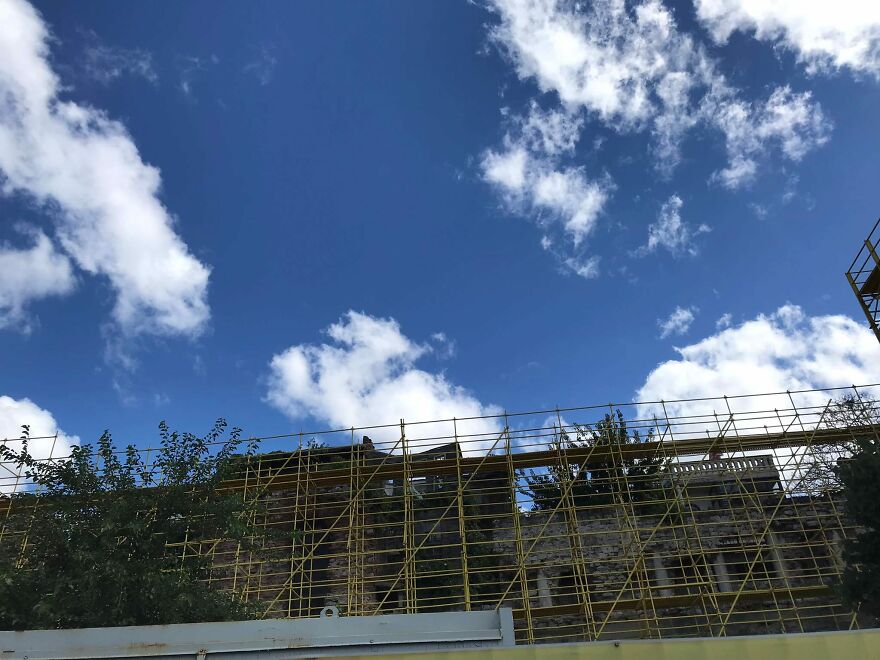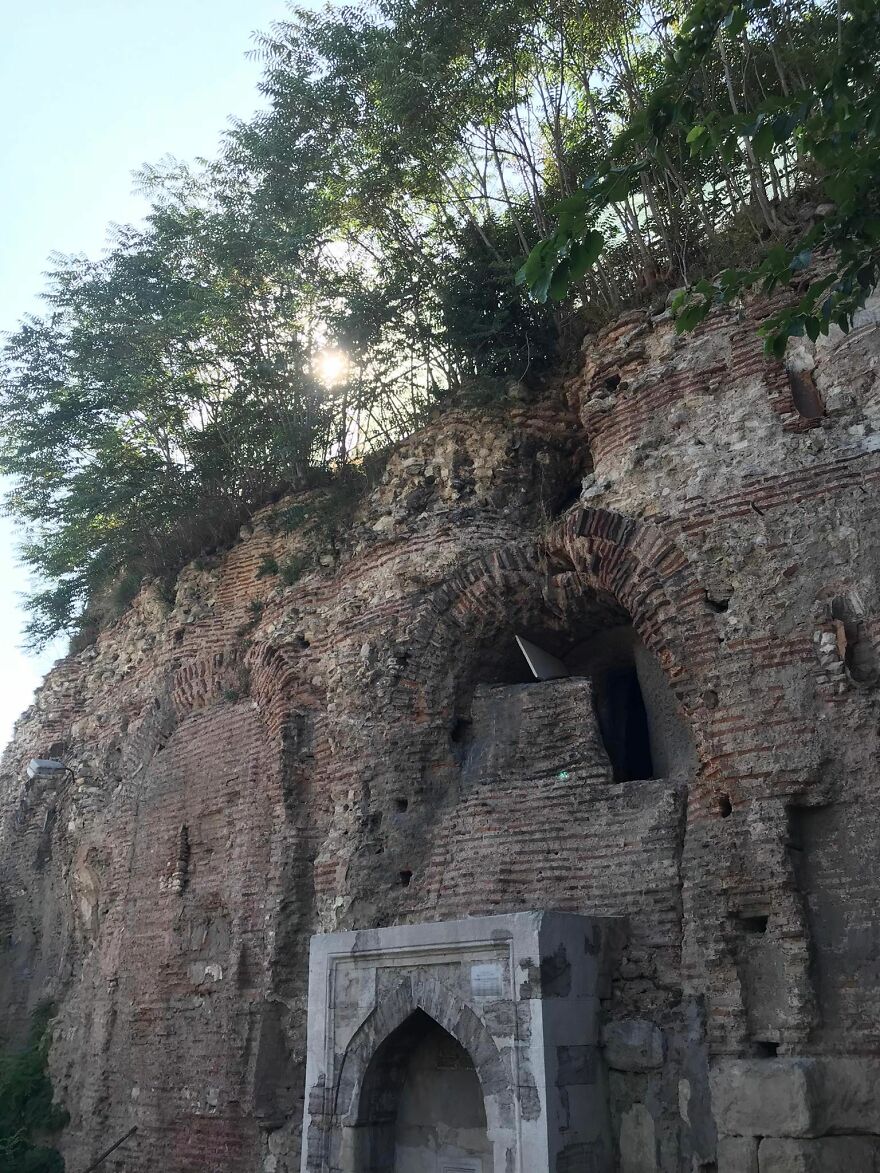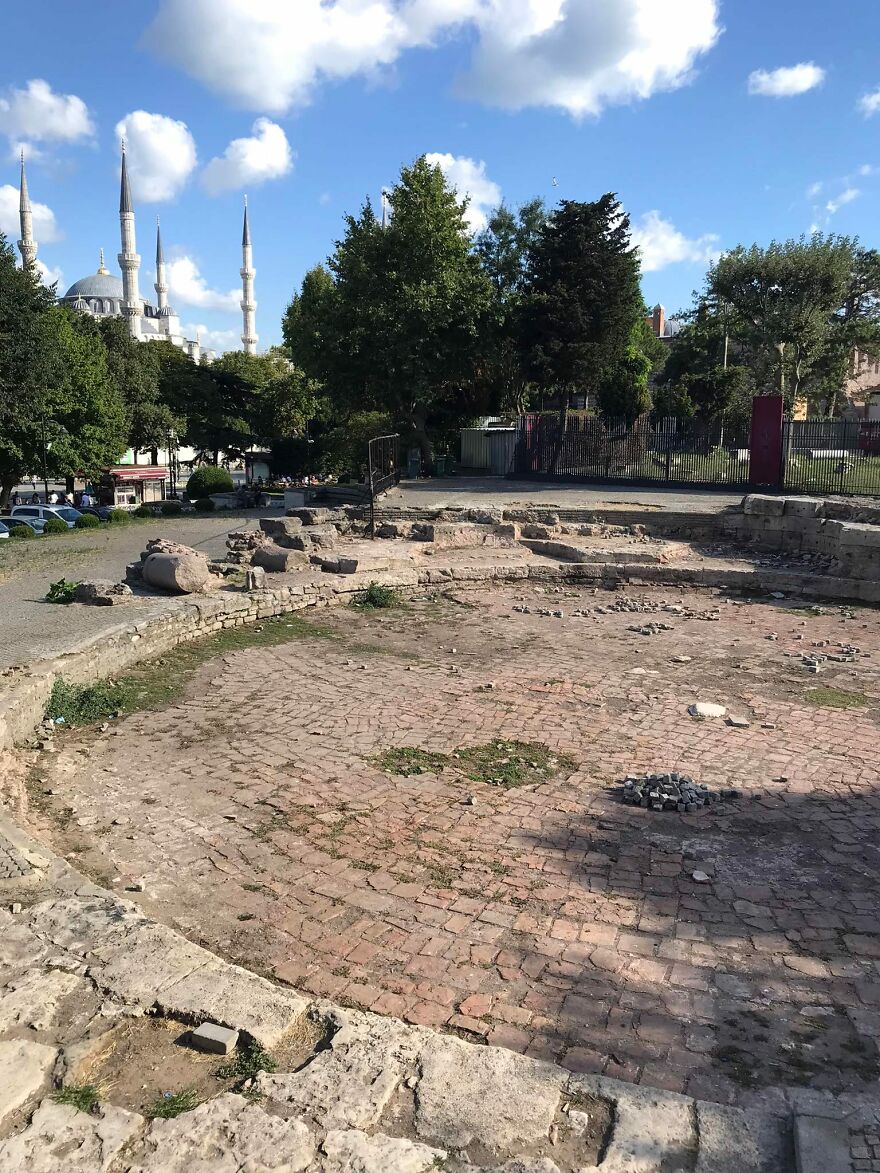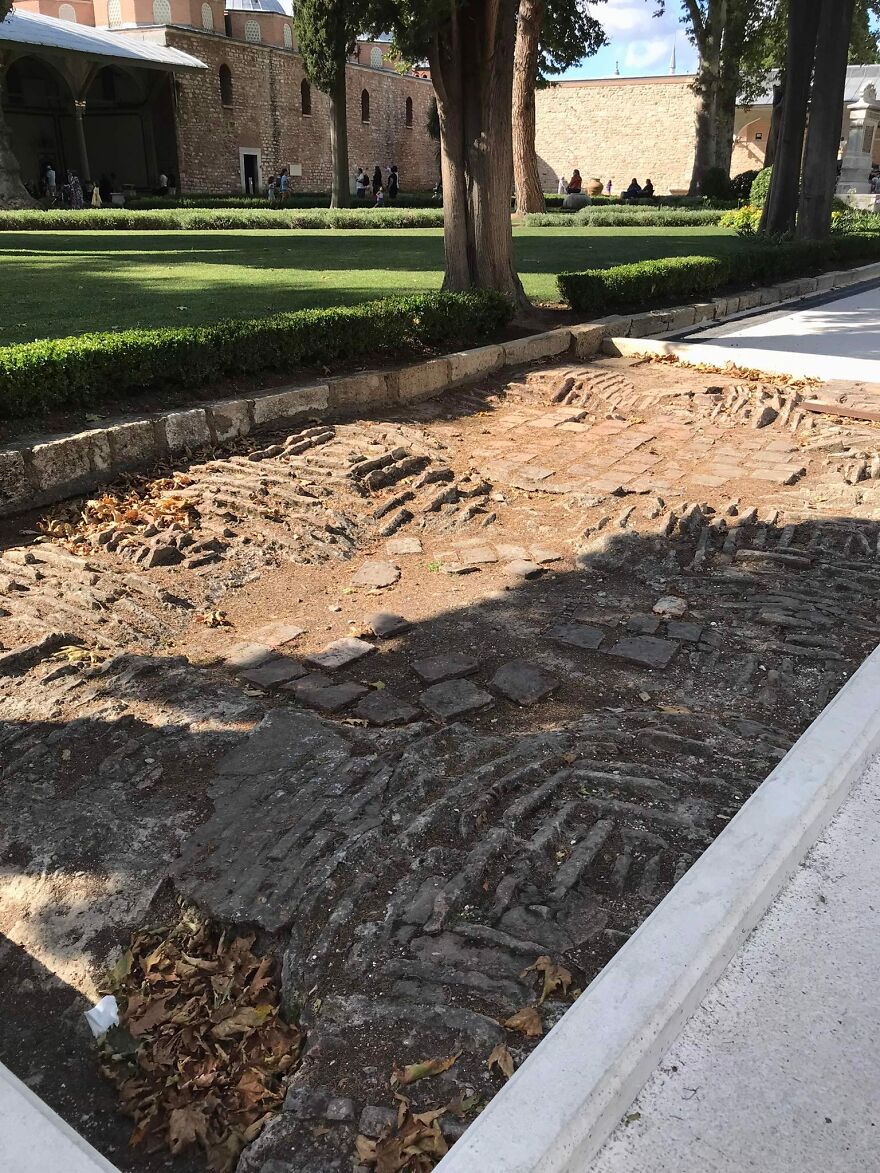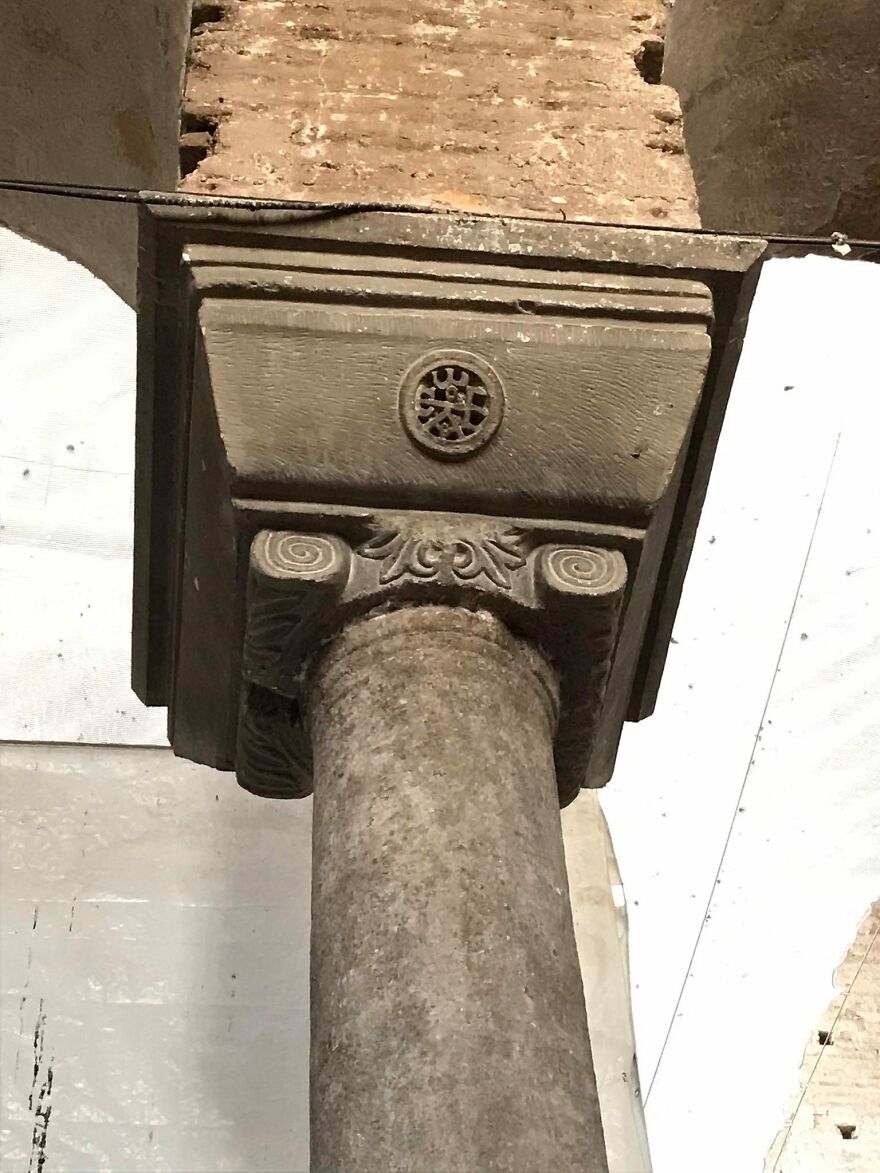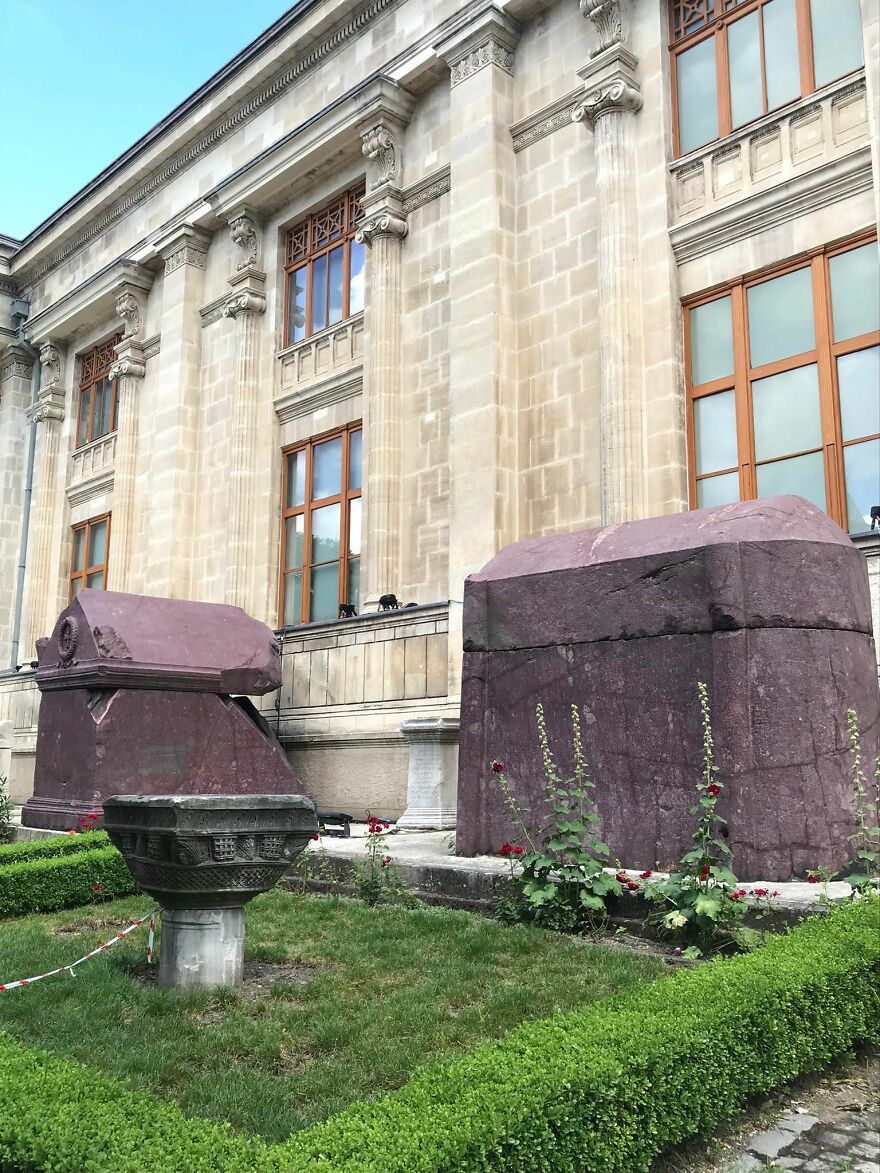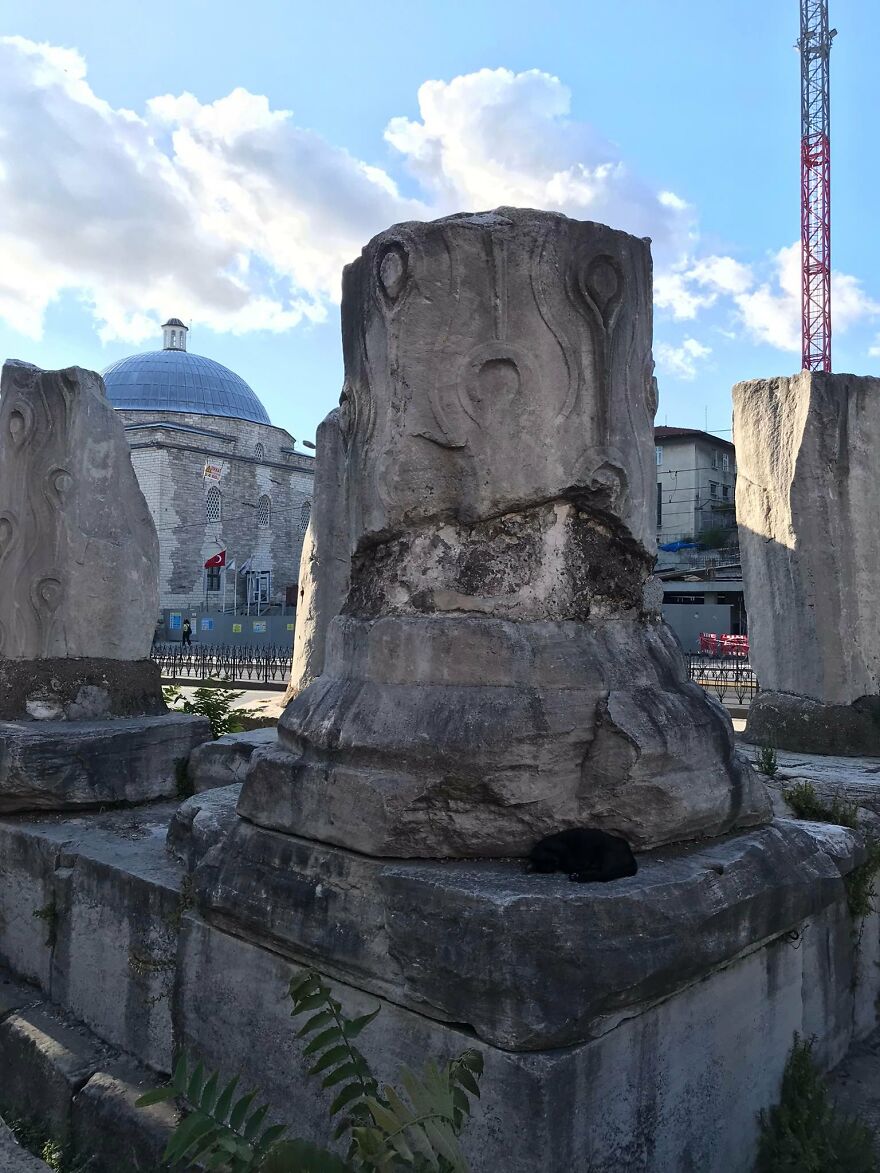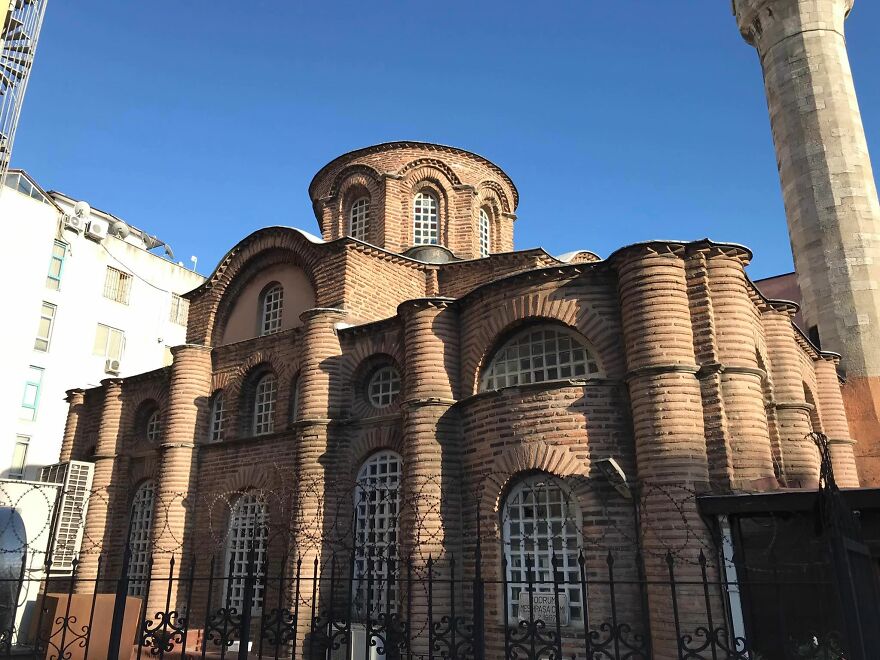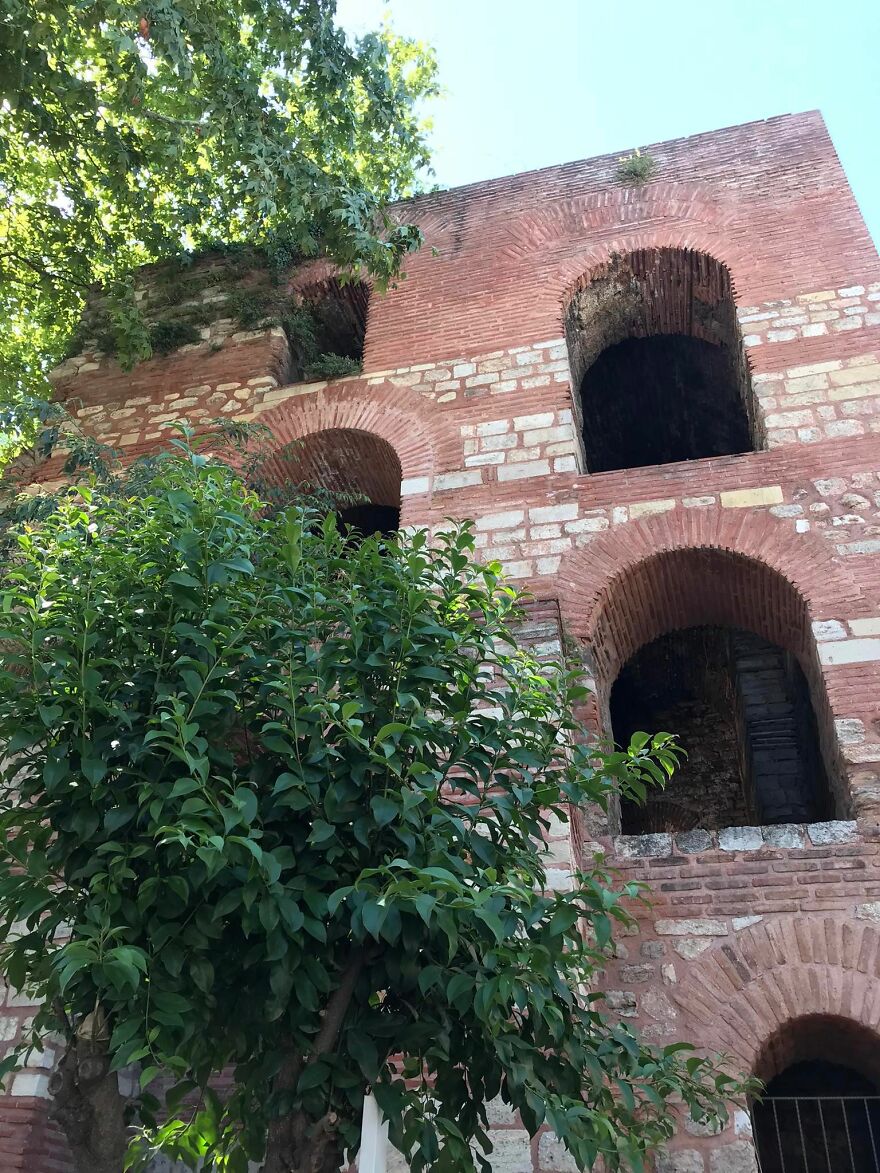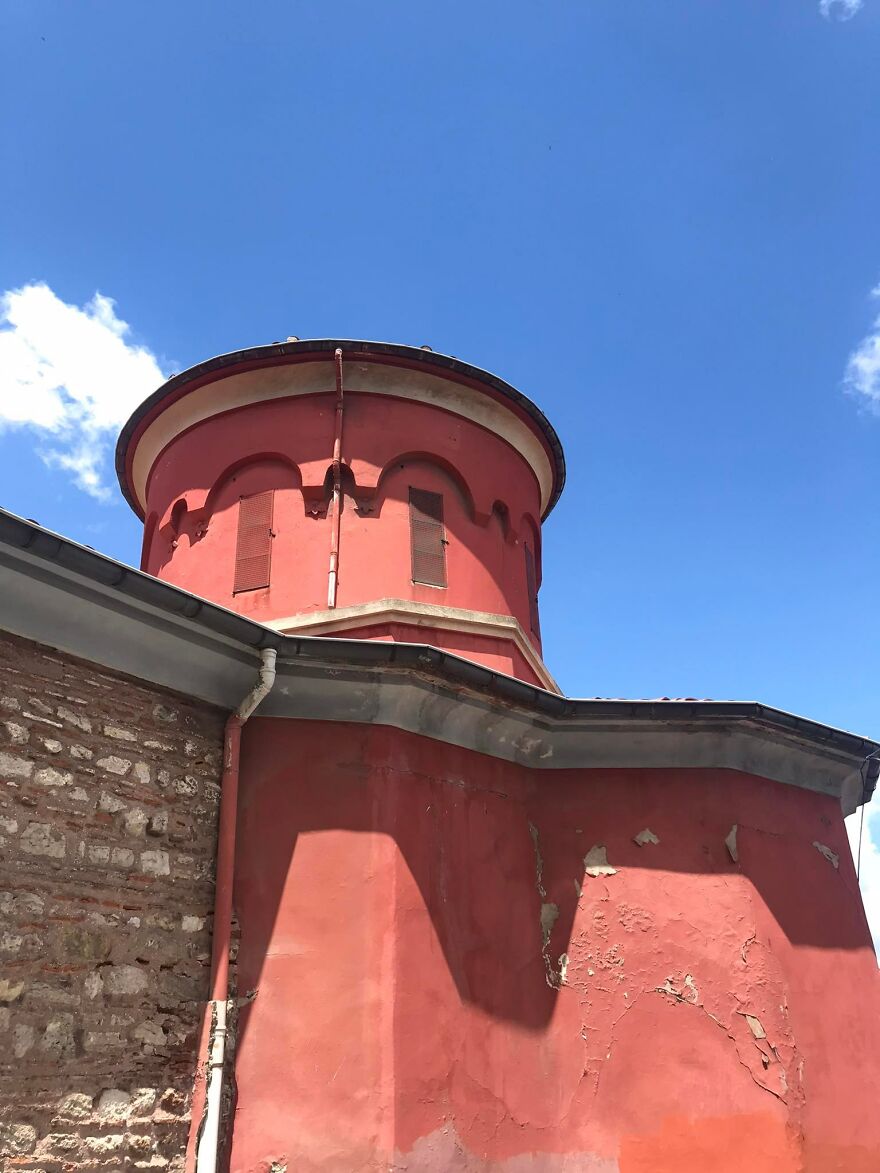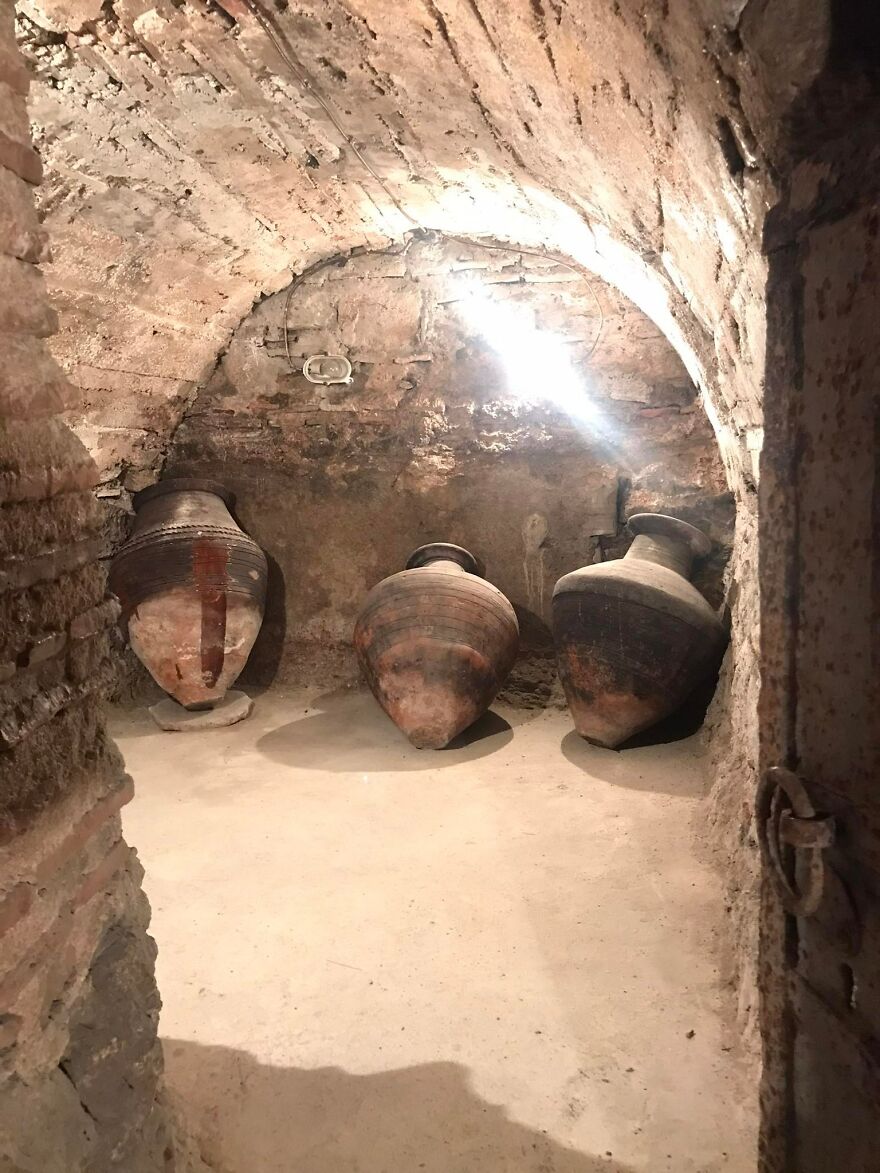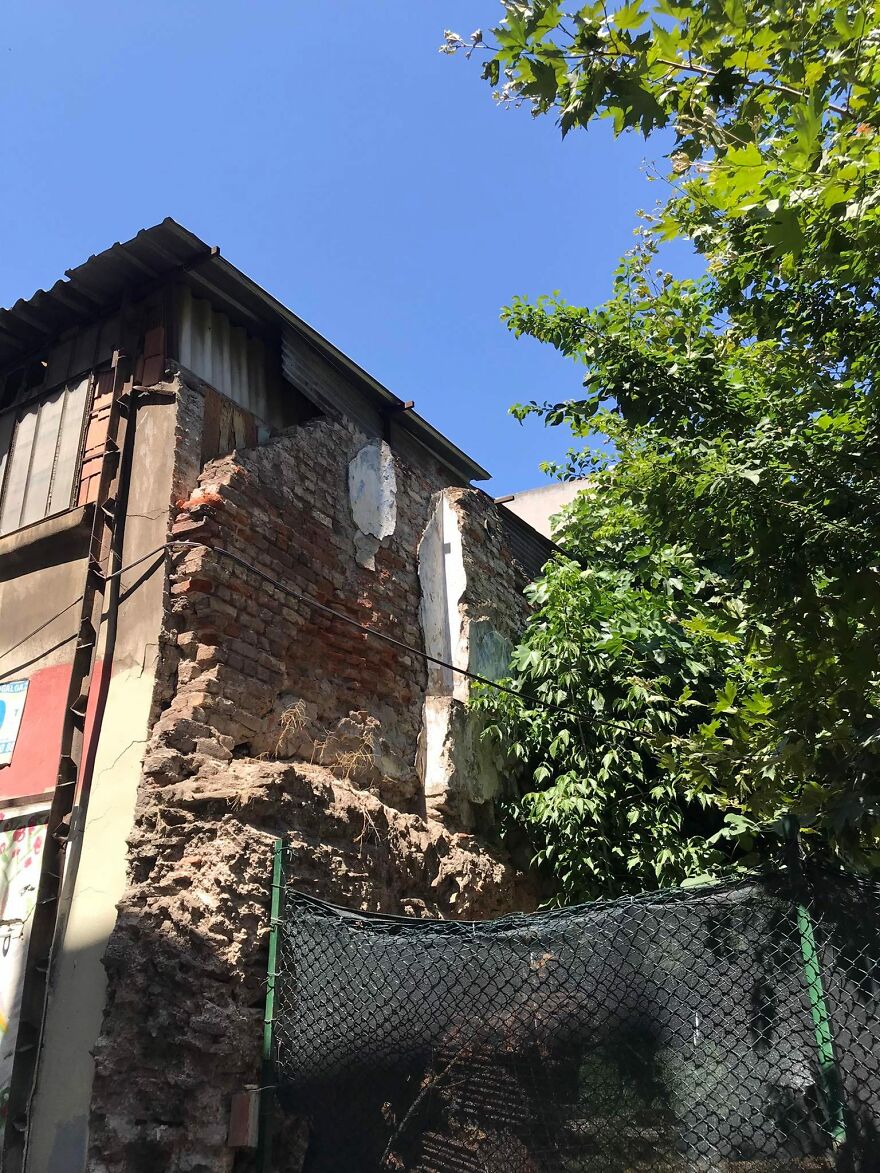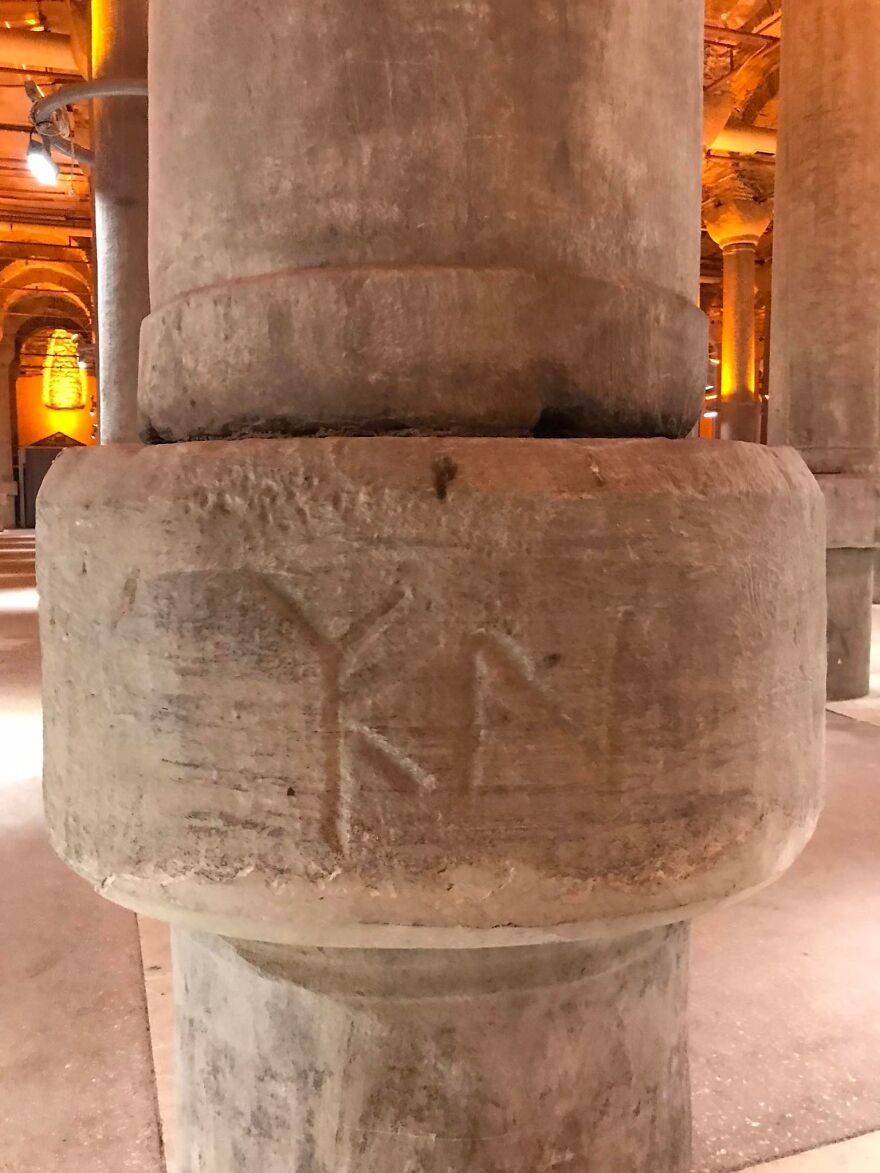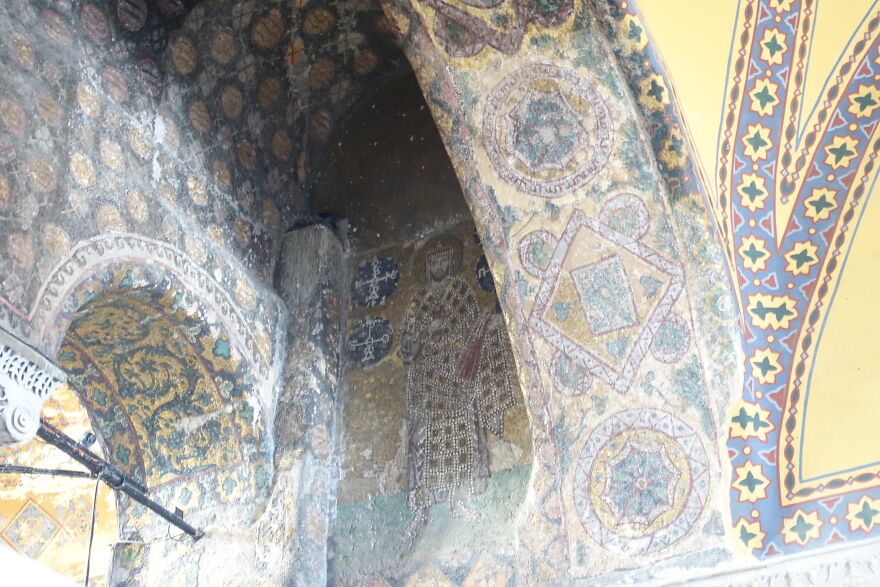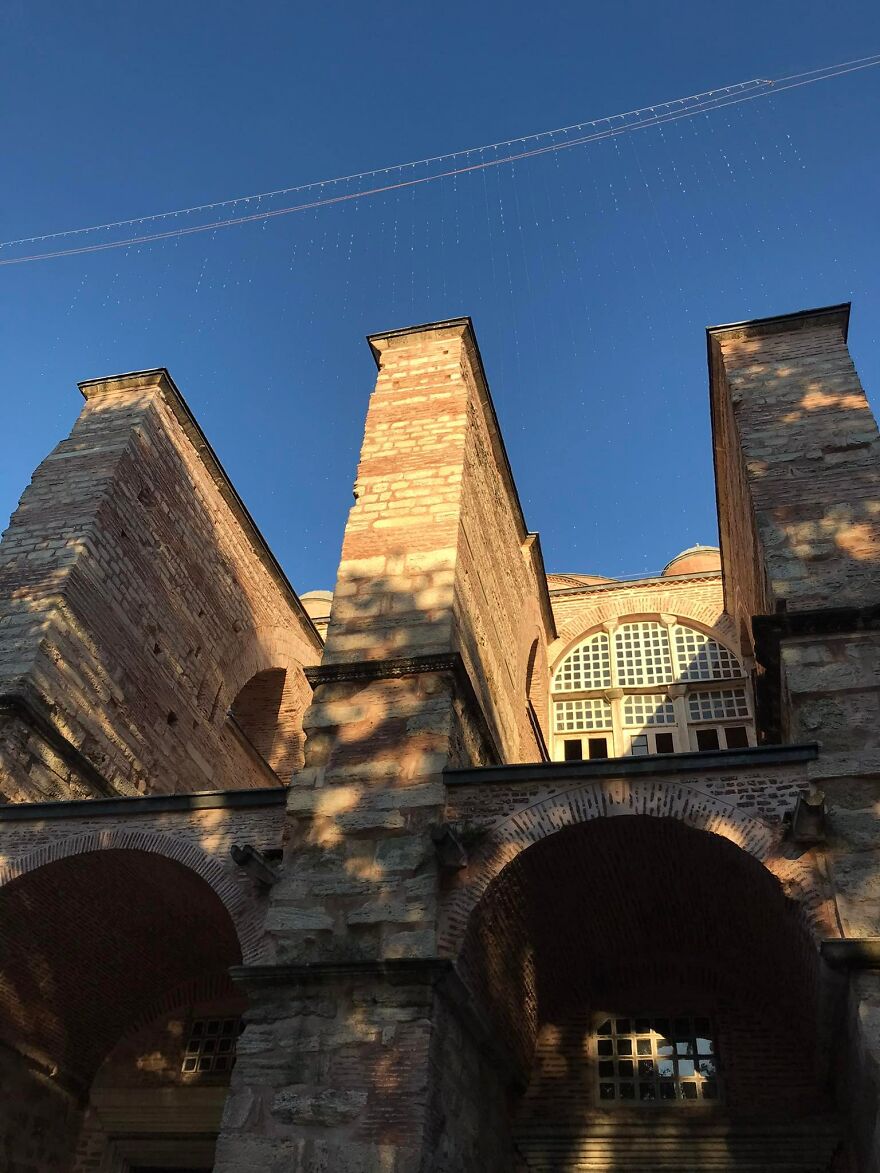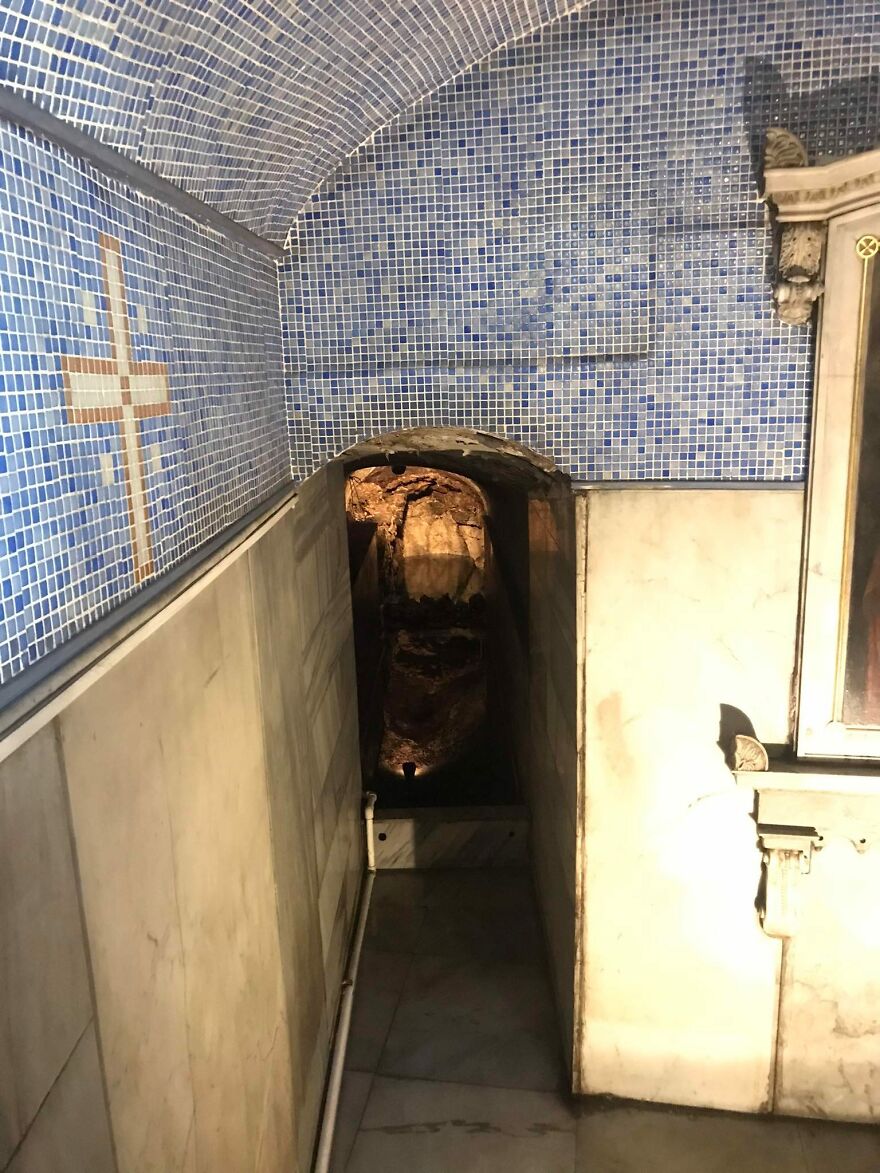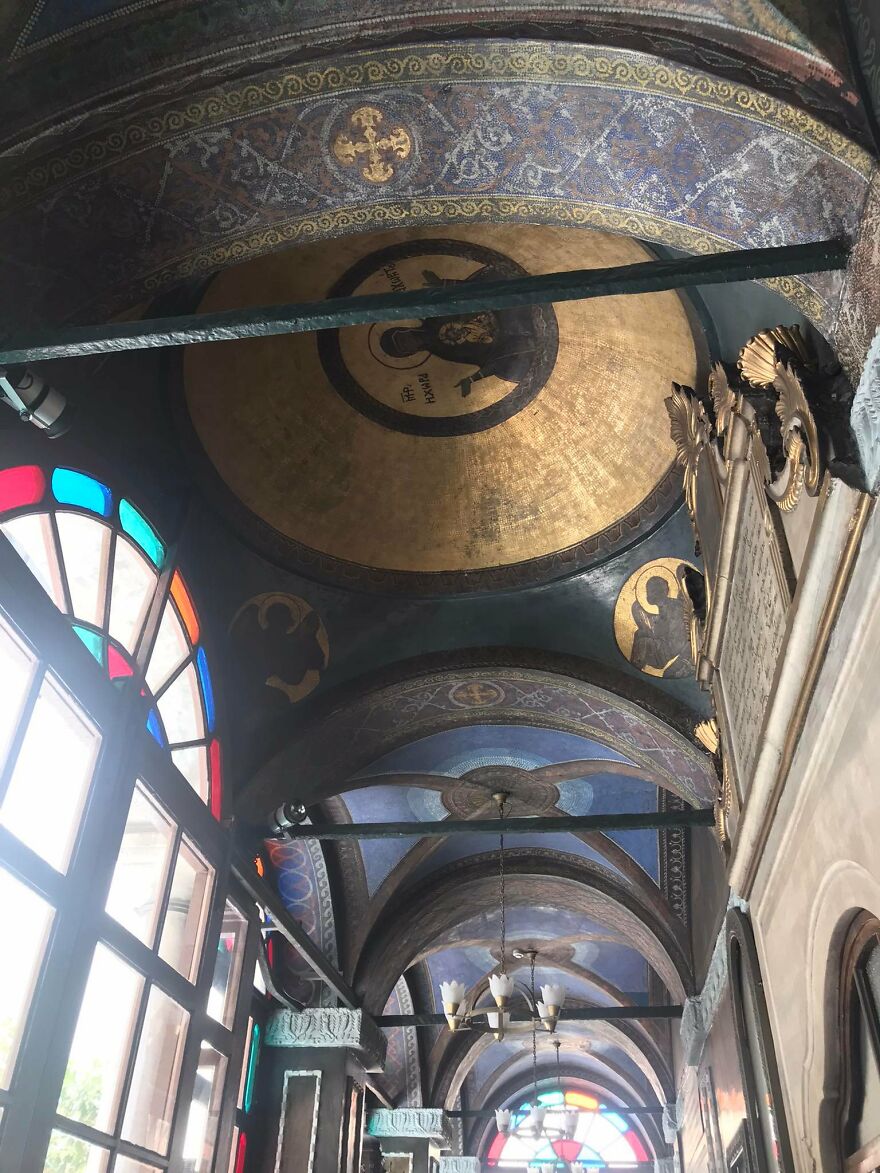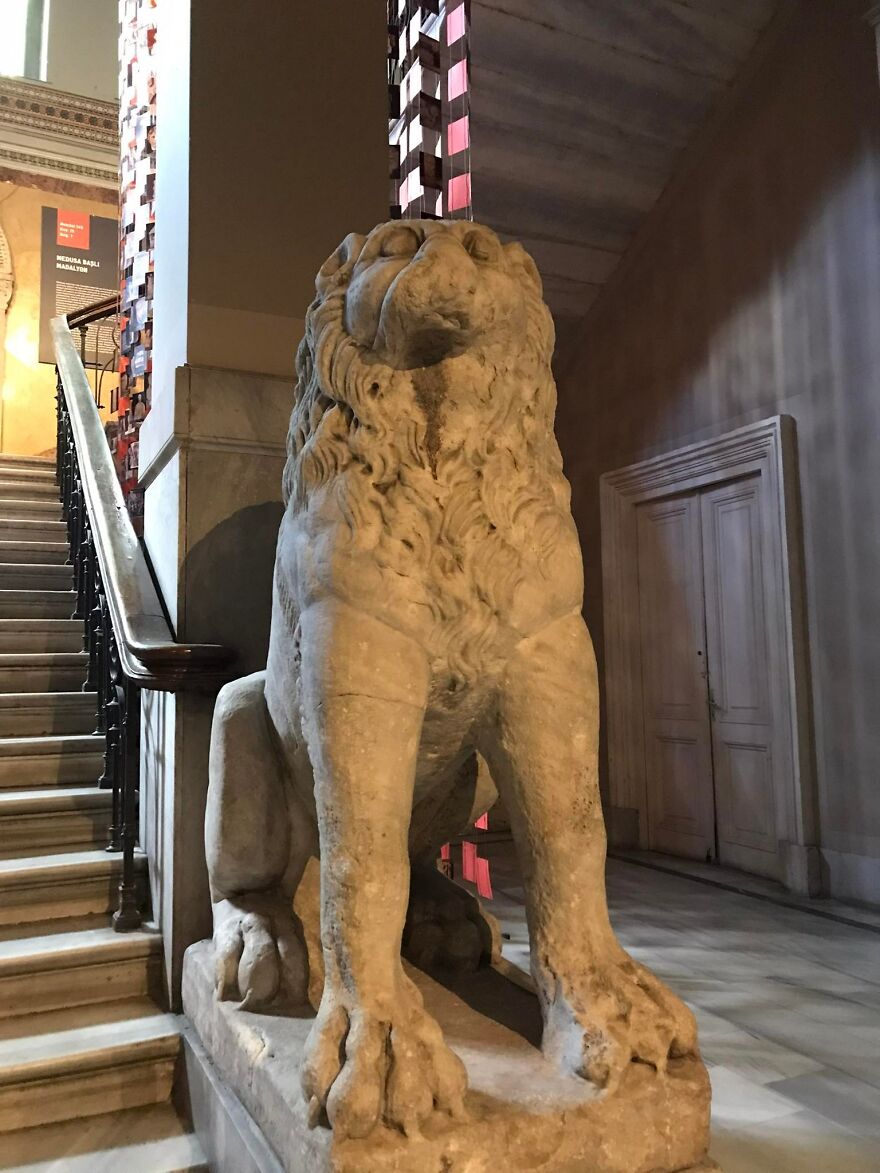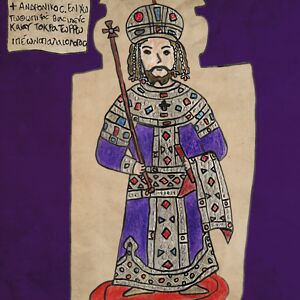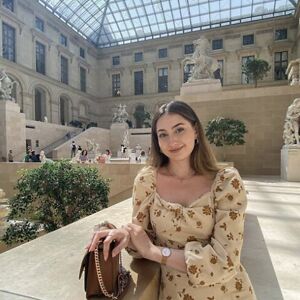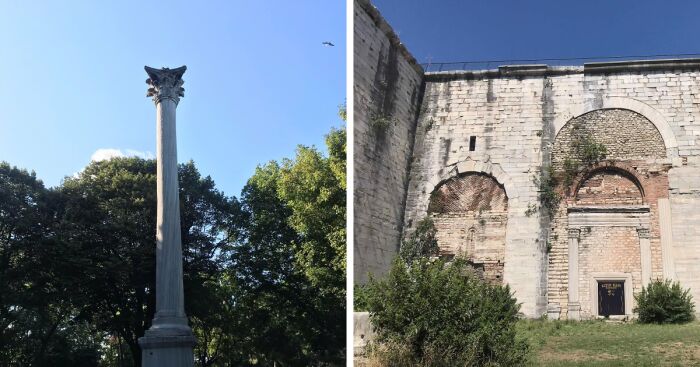
1Kviews
I Captured The Hidden Historical Treasures Of Istanbul You May Not Have Noticed (30 Pics)
Istanbul, Turkey is perhaps one of the world's most visited cities featuring some of the world's most renowned historical sites such as the Hagia Sophia, the land walls, Topkapi Palace, and countless Ottoman-era mosques. However, Istanbul which was once the Byzantine imperial capital Constantinople (330-1453 AD) has layer after layer of history beneath it, and there are a large number of landmarks or just remnants of what was once part of magnificent historical buildings standing right there.
For all you know, a ruin of an ancient column or just a run-down brick wall you would come across randomly when walking around Istanbul may be something of great historical significance! In this post, I will be showing random historical remnants in today's Istanbul- mostly dating back to Byzantine Constantinople- which all have a long story behind them whether they were once Byzantine churches, public squares, or simply pieces of curiosity within famous landmarks like the Hagia Sophia or Topkapi Palace. So don't just judge these structures by their run-down looks!
More info: Facebook
This post may include affiliate links.
The Column Of The Goths
A lone column dating back to either the 2nd or 3rd century AD with mysterious origins. This is the Column of the Goths and it can be found right at the middle of Gulhane Park at the tip of the peninsula that makes up Istanbul's old city.
The Milion
Near the Hagia Sophia, you may chance upon some ruined stones and bricks just beside the street. These ruins once belonged to a 4 arched structure known as the "Milion" which was the "kilometer zero" point of the Byzantine Empire.
The Omphalion
If you ever wonder what this large marble circle surrounded by smaller circles found at the floor of the Hagia Sophia is... this was the exact spot where Byzantine emperors in their day were crowned known as the "Omphalion"!
The Base Of A Colossal Statue
Another piece of interest found right at the grounds of Topkapi Palace! If ever you come across it, at first it may look like just another Ancient Roman or Byzantine column capital. This however was not just any column capital but the base of what was once a colossal statue of a 5th century emperor. Unfortunately, today all that is left of it is the base as the statue had ended up in a coastal town in Southern Italy where it found itself shipwrecked there when the Crusaders attacked Byzantine Constantinople in 1204.
The Palace Beneath The Restaurants!
One of Istanbul's hidden treasures happens to be found beneath two restaurants behind the Hagia Sophia and Blue Mosque. From these restaurants, you can gain access to a network of halls that were actually once the great hall of the Byzantine imperial palace. It's not hard to get lost in them as they happen to be lit by chandeliers as well.
A Cafe Within The Sea Walls
At the road along the Golden Horn which is the city's harbor and near the Gul Mosque as well is a cafe which happens to be built within the Byzantine era sea walls of Constantinople along the Golden Horn.
A Medieval Gate Right At The Middle Of The Streets
Near the Gul Mosque as well, you will also chance upon a tiny medieval gate at the start of a small street. This gate known as the "Ayakapi" still happens to look intact and yet has not been enlarged to allow larger vehicles to pass through it. This gate which was part of the Golden Horn sea walls apparently dates all the way back to the 6th century, and during the Ottoman conquest of Constantinople in 1453, one of the Ottoman generals was allegedly killed here by the Byzantine defenders.
Viking Runes In The Hagia Sophia
In what is now the Hagia Sophia Mosque, in the upper floor, a strange thing one may come across are Viking runes carved into a marble slab. The answer to this mystery is YES, they were carved by Vikings! These Viking came to Constantinople from the far north to serve the Byzantine emperor as his loyal bodyguards. When serving the emperor, these Vikings were known as the Varangian Guard. With the Hagia Sophia then as the great church, probably when the emperor was attending a service, his Viking bodyguards out of boredom must have carved these runes into the marble.
The Mysterious Tomb At Gul Mosque
The Gul Mosque (known in English as Rose Mosque) has one rather mysterious feature if one is to look carefully. In the second level you will see a small window with what appears to be a room inside. Inside this room in the upper floor is said to be a tomb, however it remains disputed over who this tomb belongs to. As a church in the Byzantine era, it was dedicated to St. Theodosia, hence it could be her relics kept there. However, another theory says that in that room above are the remains of the last Byzantine emperor Constantine XI Palaiologos who died in battle when the Ottomans captured Constantinople in 1453, however this may be highly unlikely as Constantine XI's body was never found, or so it's said... Whoever it is that is buried up there, this church was in ruins when the Ottomans captured Constantinople in 1453 and was only converted into a mosque in 1490, and being a mosque its past as a Christian church was hidden, hence it is not known who's tomb is in the upper floor, or if there is any tomb at all?
The Golden Gate
At the Yedikule Fortress, you will come across a structure that seems to look like something like a 3 arched gate. You guessed it right! Apparently, this was the Golden Gate and was once a triumphal arch for victorious emperors in the Byzantine era.
The Hospital Of St. Sampson
Next to the historical landmark known as the Hagia Eirene, you will see some ruins right next to it and a cafe. These were the ruins of what was once a medieval era hospital known as the "Hospital of St. Sampson".
More Ruins At Gulhane Park!
Turns out Gulhane Park is not just a place for leisure but one with medieval ruins just right there! These are the ruins of what was once a medieval Byzantine era orphanage.
Boukoleon Palace
When passing the seaside road of Istanbul along the Sea of Marmara, you would come across a large ruined structure which is now under restoration. This happens to be one of the many imperial palaces in the Byzantine era, and this had the luck of being in prime property right next to the sea. So in case there was any trouble in the city, the emperor could always safely escape by boat!
The Sphendone
The legendary Hippodrome of Constantinople where chariot races took place was apparently so large that there was not enough land for it to be a full-length Hippodrome as the city of Constantinople was naturally hilly. The architects however came up with a brilliant solution to continue building the flat Hippodrome over a sloped terrain. To achieve this, they reclaimed land over the slope so that there would be more space for the Hippodrome's racetrack and seats for its viewers. Today, the elevated semi-circular back end of the Hippodrome known as the "Sphendone" can still be seen as a semi-circle stone and brick structure rising above the ground which thus reaches ground level as the slope goes up.
The Palace Of Antiochos
Just near both the Hagia Sophia and Blue Mosque, you would come across an ancient ruin in the form of a circle on the ground which appears to look like a Greek or Roman amphitheatre. This however was not an amphitheatre but a palace which had been around since the 5th century known as the Palace of Antiochos.
The Roof Of A Cistern
Topkapi Palace is one of Istanbul's most visited attractions. However, if ever you visit it, you would come across some pieces of curiosity here and there that may look out of place, and one of them is this. When looking at the grounds of Topkapi, you may come across a pile of bricks and think that it may just be a section of the floor that needs to be repaired. However, this pile of bricks is apparently something of historical significance. This happens to be the roof of what was once a cistern that dates back to the 5th century.
Monograms
In Byzantine times, emperors usually put their names everywhere especially in structures they had built, but not exactly their full names, rather monograms of their names or the initials of their names fused together. This picture shows a monogram above a column in the Hagia Eirene which was once a church in the Byzantine era. This monogram is of the 6th century Byzantine emperor Justinian I and his wife Empress Theodora put together.
Porphyry Imperial Sarcophagi
At the grounds of the Istanbul Archaeological Museum, there are 4 large slabs that can't be missed! Some may already know what they are, but to those that don't, these were tombs of 4 different Byzantine emperors from the 4th century. All 4 are made of the purple stone known as porphyry as purple was the imperial color, and all are very massive which is why they can't be missed!
The Forum Of Theodosius
Near Beyazit Square in Central Istanbul, along the main road you may come across the ruins of what seems to be the bases of columns. These apparently belonged to a major public square that once stood here known as the "Forum of Theodosius" dating back to the 4th century named after Emperor Theodosius I which in its day was a very lavish public square.
Bodrum Mosque (Myrelaion)
Right in the middle of Istanbul's busy shopping district, you will come across an impressive though rather small historical building which happens to be the Bodrum Mosque. This building though dates all the way back to the 10th century as a Byzantine era church known as the "Myrelaion" which meant "the place of myrrh" in Greek. It was the church of what was an imperial palace building and is the only structure from the 10th century palace on this spot that survives to this day due to being converted into a mosque by the Ottomans in 1500.
The Ramp Tower
Just next to these restaurants which have access to the halls of what was once the imperial palace, along the road you will happen to chance upon an ancient looking structure. This brick structure which is known as the "Ramp Tower" was apparently part of Byzantine Constantinople's Great Palace Complex too and dates back to the 6th century.
The Bloody Church
Perhaps one of the most unique sites in Istanbul is a small red Orthodox church in the Fener neighborhood right next to the massive and imposing red Phanar Greek Orthodox College, thus there is a great contrast if these two buildings are put side by side with each other. This red church commonly known as the "Bloody Church" for its red exterior is also known as the "Church of St. Mary of the Mongols". This church structure dates back to the 13th century and it happens to be the only remaining church from Byzantine era Constantinople that still remains as a functioning church today as all other Byzantine era churches in the city were converted into mosques following the Ottoman conquest of 1453.
Underground Tunnels Of The Bloody Church
Apparently, the red exterior isn't the only unique feature of the Bloody Church in the Fener neighborhood. Apart from that, it has access to a network of medieval tunnels which are now lit up, and luckily if you can access them, you can get a feeling of what it was like to be in the Byzantine era! These underground passages that can be accessed from the Bloody Church is said to go all the way to the Hagia Sophia despite the long distance between them.
A House Built Within A Byzantine Church
Another piece of curiosity near the Gul Mosque as well happens to be the remains of a brick wall with some houses built into it. Apparently this brick wall is a remnant of a Byzantine church that dated back to the year 1200.
More Hidden Monograms!
A lesser known tourist attraction in Central Istanbul near the Hagia Sophia and Blue Mosque is a spacious Byzantine cistern, not as well visited as the famous Basilica Cistern (Yerebatan Saray). This less visited one is known in Turkish as the Binbirdirek Cistern which means "Cistern of 1,001 Columns" due to the large number of columns it has, and in Greek it is known as the "Cistern of Philoxenos". In some of its columns, you may spot carved letters, these were apparently the initials of the masons that built these columns fused into monograms.
Hidden Mosaic Of A Byzantine Emperor
Another hidden treasure in the upper floor of what is now the Hagia Sophia Mosque is an impressive mosaic of a Byzantine emperor tucked in a hidden corner, so it may not be very easy to spot! This mosaic is of the 10th century Byzantine emperor Alexander who only reigned for a year (912-913). Despite having such a short reign, he still commissioned a very ornate mosaic of himself looking like an all-powerful emperor.
Buttresses In The Hagia Sophia
Now buttresses aren't a very common feature in Byzantine architecture, and yet the most famous piece of Byzantine architecture being the Hagia Sophia has them! When being built in the 6th century, the Hagia Sophia did not feature any buttresses, however due to the passing of time, to further support this great structure from occasional earthquakes and from eroding, buttresses had to be added to it. On the west side of the Hagia Sophia, you can spot 4 brick buttresses, and these were added by the Crusaders during the time they occupied Byzantine Constantinople (1204-1261). On the opposite side of them, you will also spot additional stone buttresses, and these were added in the 14th century when the Byzantines had already taken back Constantinople from the Crusaders. In the 16th century with Constantinople under the Ottomans, the architect Mimar Sinan added additional buttresses to further support the Hagia Sophia which became a mosque.
A Hidden Spring In Blachernae Church
Although the structure of the Orthodox church of St. Mary of Blachernae near the land walls of the city only dates back to the 19th century, it was built over a church that dates all the way back to the 5th century. Back in the 5th century, this church was built over a spring which contained holy water. Today, when visiting the Blachernae church, you can still see this spring which contained holy water, and up to now it still does have water!
A Greek Church With Byzantine Art In Galata
Near the busy street of Istiklal in the Galata District of Istanbul, you may come across the impressive Greek Orthodox church known as "Panayia Isodion Kilisesi" with Byzantine style art including mosaics. Now, this church and the art as well is not from the Byzantine era but only dates back to the 19th century. However this church with its art is still definitely a great replica of a Byzantine era church!
The Lion Sculpture From A Palace
One of the treasures found in the Istanbul Archaeological Museum is a mostly intact sculpture of a lion which is centuries old. This lion statue apparently came from the same seaside Boukoleon Palace within the city, and true enough part of that palace's name comes from this lion statue as the palace's name comes from the combination of "bull" and "lion" as there was a statue of a bull and lion outside the palace's entrance, hence its name "Boukoleon".

 Dark Mode
Dark Mode 

 No fees, cancel anytime
No fees, cancel anytime 






